Ranu Raraku is the quarry where all the moai were carved. It also features a beautiful volcano crater. This is the other site, where you can buy the $60 ticket. Again was a small price to pay for what I was about to experience. There are bathrooms and a small store where tourists can buy snacks and souvenirs. After entering, the path splits. To the right is the quarry and to the left is the volcano. I took the right turn first.
There are more than 400 moai that are still unfinished in the quarry. All moai were first carved out in the bedrock, and then cut out and slid down the hill, and then using ropes and wooden structures, taken to their final platforms all over the island. At Ranu Raraku, we can see moai in all stages of production – some of them are still in the bedrock, some are half finished, and some of them are lying toppled way down the hill, and beyond the boundaries of the quarry.
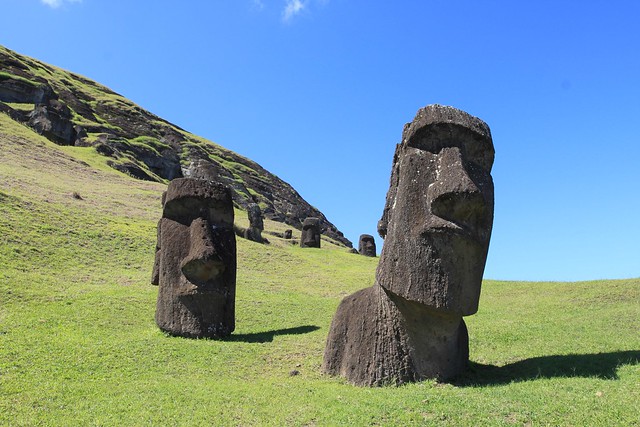


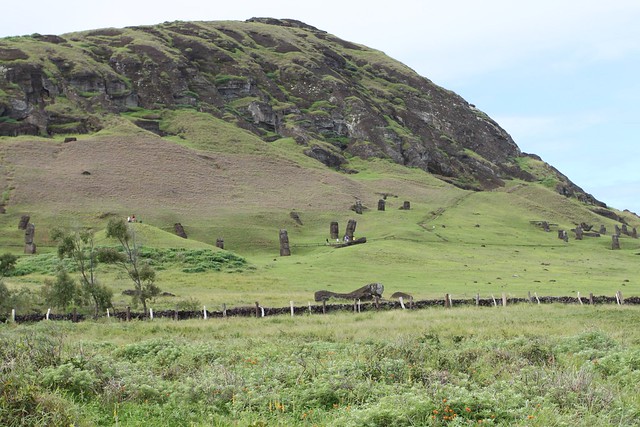
A lot of the moai that are standing are only showing their heads. It looks like they were only half finished. However, the anthropologist and explorer Thor Heyerdahl proposed and then proved the theory that they are all full size moai, and their lower parts were buried in the ground. After they were carved out, they were abandoned, and over the years the earth slid and covered their lower parts.
One of the most amazing moai is still in the bedrock. It was supposed to be the biggest moai ever carved at Easter Island at 69 feet long, weighing 250 tons.
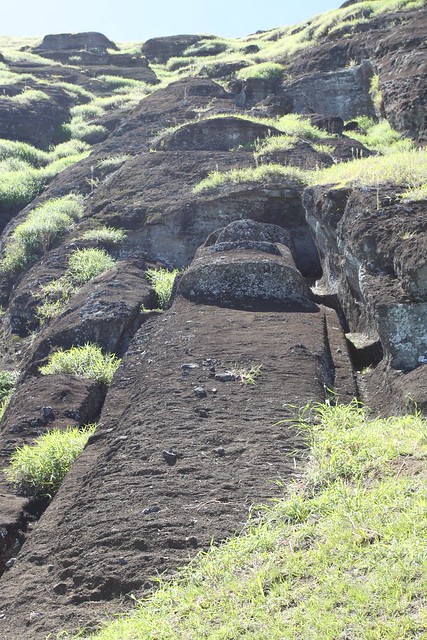
Another interesting moai is the “kneeling moai”, which is the only statue to have legs under its body. It was excavated by Thor Heyerdahl.
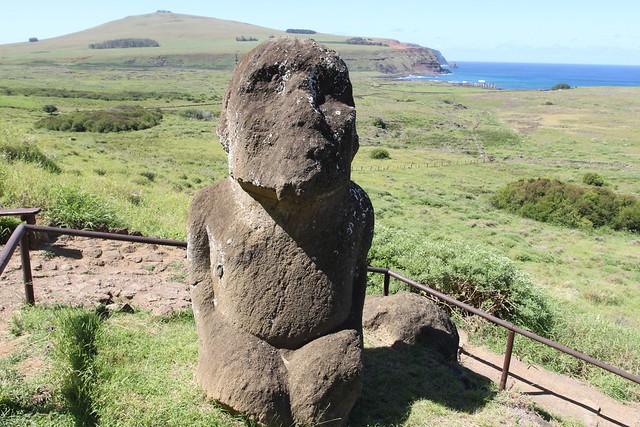
At the end of the path, there is an amazing view of the ocean and Ahu Tongariki in the distance.

After enjoying for a while, I walked back and went on the other side where the crater of the extinct volcano is. The view was breathtaking. At that point, I was convinced that visiting the Easter Island was one of my top destinations ever, even if I only saw Ranu Raraku. There were some more moai on the slopes of the volcano and according to previous guidebooks tourists could walk right to them but this time the path was closed and I could only enjoy them from a distance.
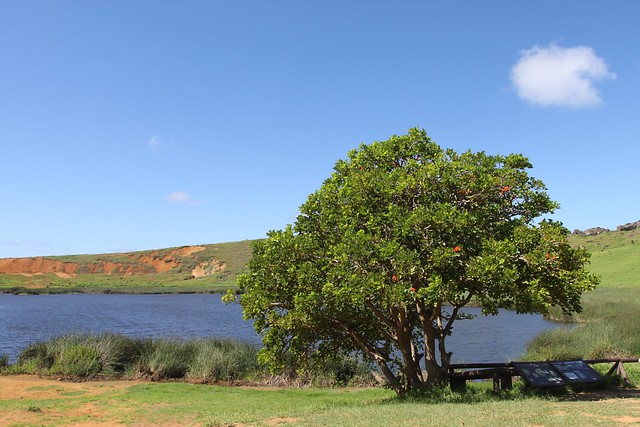
My next stop the other crown jewel of the island – Ahu Tongariki. It is a platform with 15 fully restored moai, and two additional moai on the side. The Japanese government generously provided financial and engineering help, including a large crane for the restoration, which took place in the 1990s.



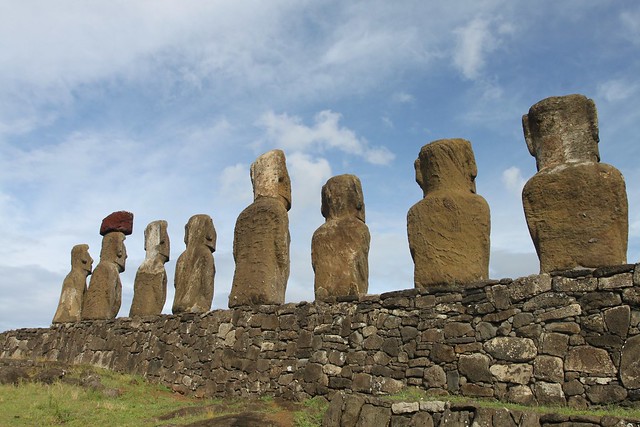
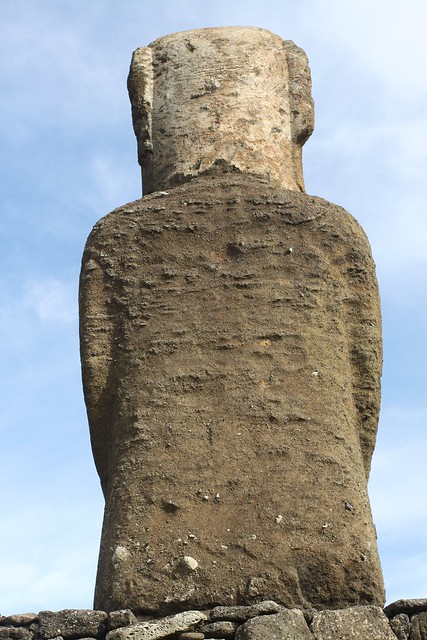
At the entrance of the site, you can see the “travelling moai”. It was brought to Japan and featured in several fairs.

There were many horses just grazing peacefully at the site.
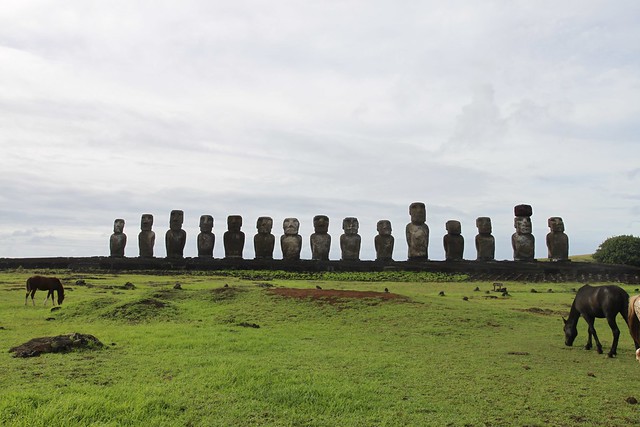
After Ahu Tongariki, I drove north and then west towards Anakena. On the way, I stopped briefly at Papa Vaka, which is the largest petroglyph site and Te Pito Kura, which features the largest moai to even have been stood on a platform, which is now toppled. The driving was not the most pleasant. It was on a dirt road, with many potholes, and my lower back and butt did not appreciate it too much. At least I was driving so I can adjust the speed the way I want. I couldn’t imagine how I would feel if I was part of a group or someone else was driving.
Finally I arrived at Anakena. It’s a spectacular white sand beach, although not as good as Ovahe beach that I was going to see the next day. The moai are also very impressive. I took several pictures and then went for a swim in the ocean to cool down from the long drive. I had covered all of the main sites in one day. Anakena bay is the place where the first inhabitants of the island arrived around 700 AD.
This is one of the few places on the island that has palm trees. Remember that all trees were destroyed in the ecological disaster. The disaster was either manmade – people cut down the trees for farming or to transport the moai, or caused by rats brought along by the first colonizers that ate down the roots of the trees. The palm trees that are here now were brought in from Tahiti.
The main platform at Anakena is Ahu Nau Nau. It was restored in 1978. The details of the moai are very well preserved because they were covered by sand after they were toppled, and therefore protected from the wrath of nature.


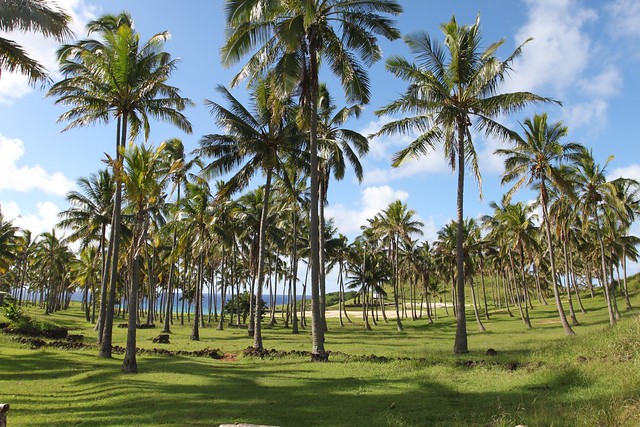
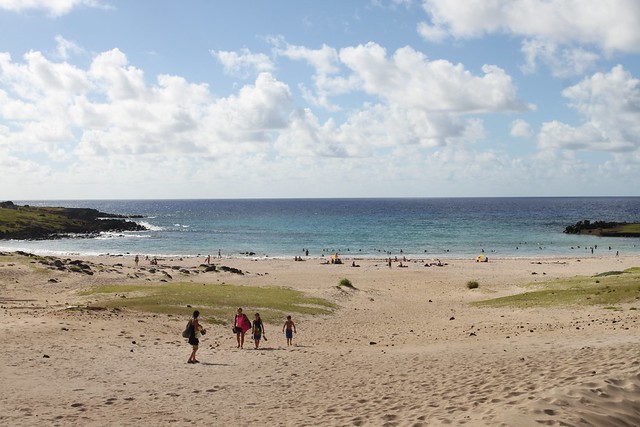
After Anakena, I drove back to Hanga Roa, had dinner and enjoyed the bay at sunset at the same restaurant La Taverne du PÍcheur, where again the food was delicious and the service was frustratingly slow.